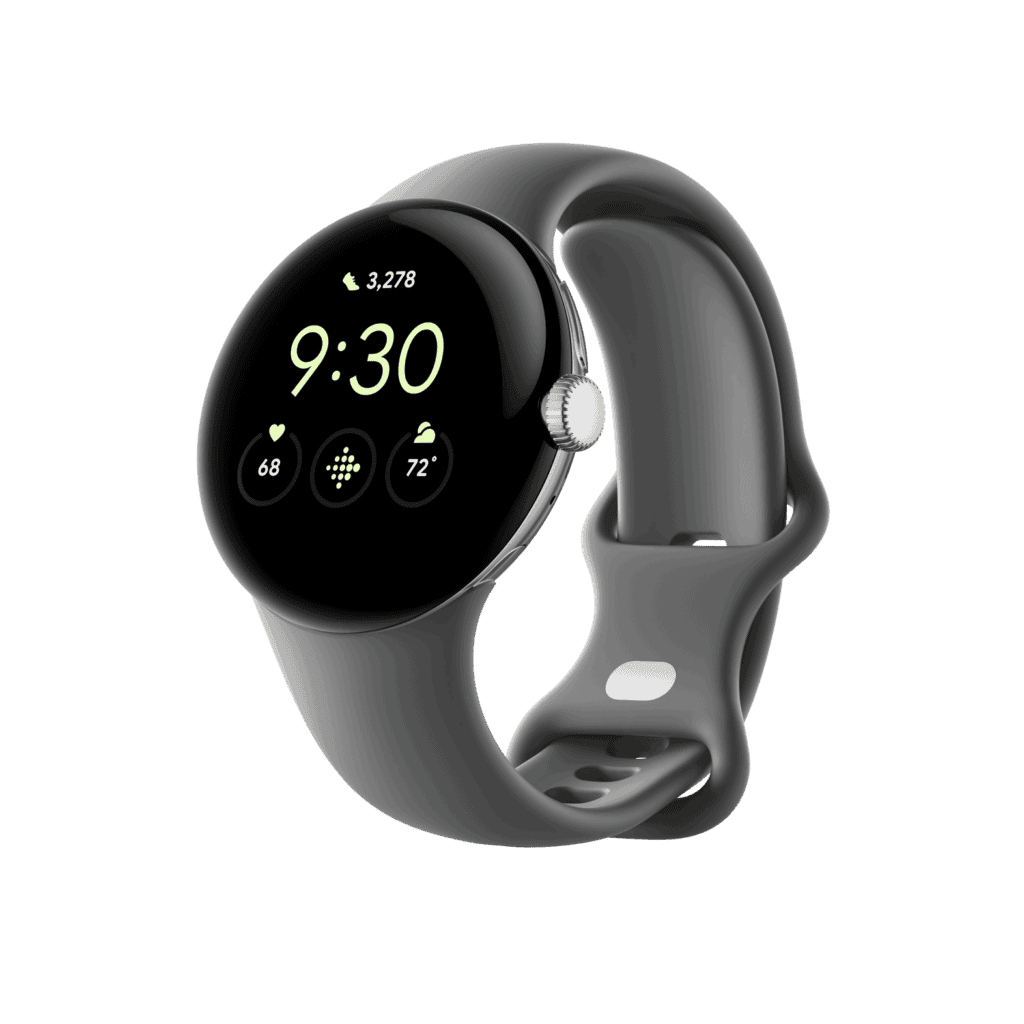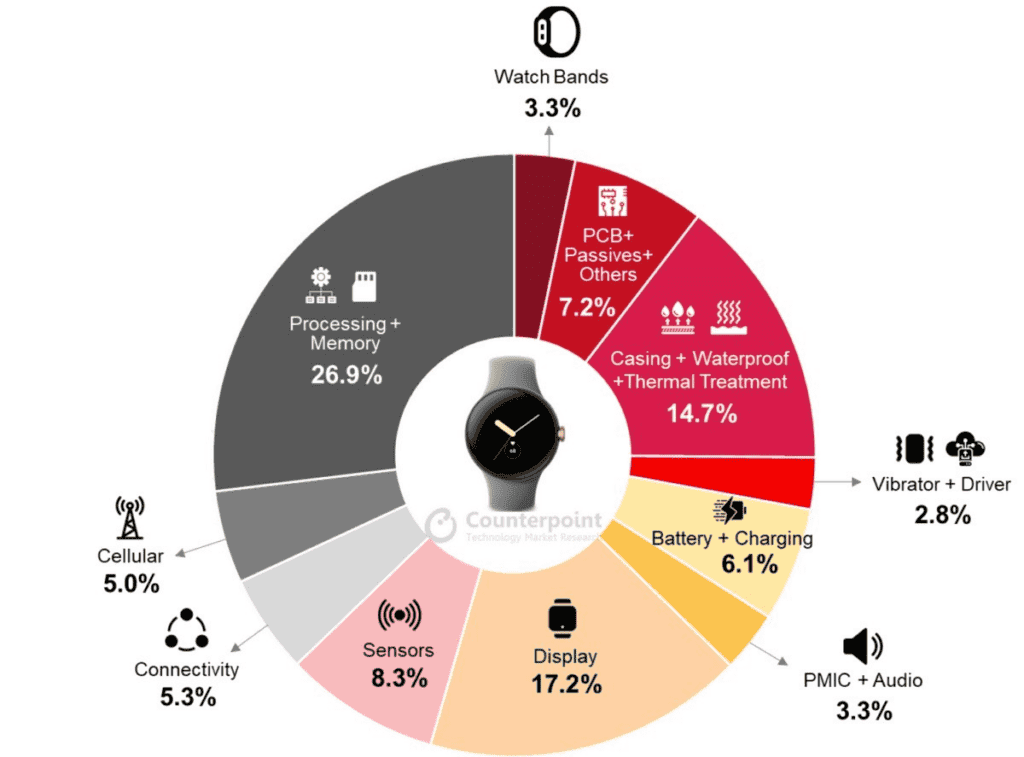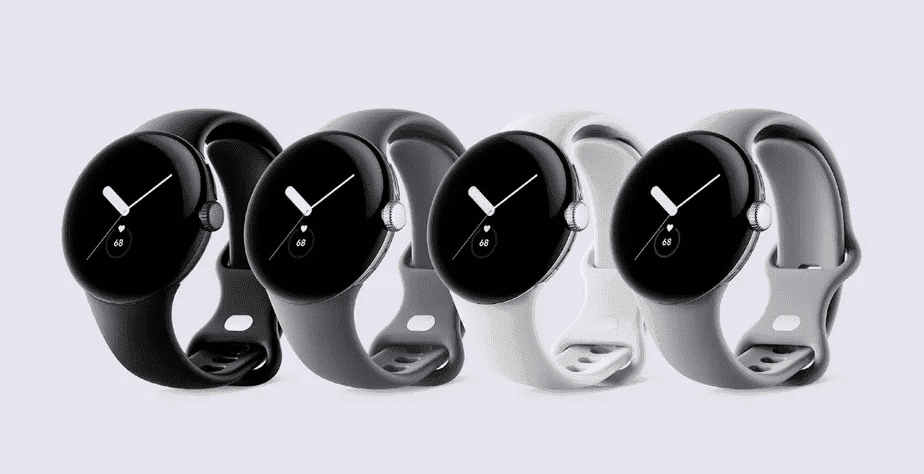It’s not unusual to discover that certain products in the electronics category have prices that are much higher to their actual manufacturing costs – and the Google Pixel Watch is not an exception. Besides the manufacturing expenses that involve a series of factors, we also need to consider the expenses on marketing and other aspects for a new product like research and development as well as the continuous support.
Usually, premium products are less profitable than mid-range and budget devices. After all, they tend to bring premium technologies that usually cost more. For that reason, the company needs to work with a lower income rate to kepe the price realistic, or perhaps, acceptable. The recently-released Google Pixel Watch is a premium product, but a new report reveals that it costs less than the expected.

According to an in-depth analysis of the Google Pixel Watch made by Counterpoint Resarch, the wearable actually costs $123 to make. That’s less than half of the product’s retail price of $349 in the US. There are a lot of factors to take in factor, and many expenses besides the materials, but we assume that the device has a good margin.
Counterpoint confirms that this number does not includ the R&D and other marketing costs. But we can have a good idea of how Google has composed the price of this device.
Samsung eats a major slice of the cake, BOE follows along with others
Samsung is one of the main beneficiaries, getting around 20% of the product’s cost. The Korean firm is the supplier of the chipset, LTE transceiver for the LTE model, and other paired components. Once again, it shows the remarkable partnership between Google and Samsung for the Pixel lineup.

BOE also takes a good amount of income. It seels the 1.2-inch OLED display for the Google Pixel Watch and it amounts to 14% of the costs.
There is also an NXP co-processor, and Kington-made memory. The combined cost of the two processors and the memory accounts for nearly 27% of the value. There is also the GPS from Broadcom, that also delivers the Wi-Fi/Bluetooth chip.
STMicroelectronics supplies the tech for the eSIM, Google Pay, the six-axis inertial sensor and the digital compass. Finally, we have the heart rate monitoring system from Texas Instruments.
That’s an interesting overview that teach us a lot about the Google Pixel Watch manufacturing costs. Again, the search giant needs to deal with other costs, and these probably also take part of the final $349 price. To be honest, this isn’t a bad price considering the features that come with the wearable. But what you think about it?
Google Pixel Watch specifications
The Google Pixel Watch packs a 1.2-inch AMOLED screen with 1,000 nits of peak brightness and 450×450 resolution. The panel comes with Corning Gorilla Glass 5 and supports Always-On Display mode.
The wwatch also boasts eSIM support, 5ATM water resistance (IP68), and is ECG certified. Under the hood, the wearables comes with the rather old Exynos 9110 (10nm) with dual-core Cortex-A53 architecture with 1.15 GHz clock speed. The Pixel Watch has 32 GB of Internal Storage and 2 GB of RAM which are more than adequate for a wearable.

The Pixel Watch has a single loudspeaker, Wi-Fi support, Bluetooth 5.0, GPS, NFC and draws its powers from a 294 mAh battery with Qi wireless charging support.
Other features include SpO2 and Heart Rate sensor. It runs WearOS 3.5 and will get support for future updates.
The launch of the Google Pixel Watch has been anticipated for years. The wearable has been floating around the rumors for years, and finally got its release in late 2022.
With the launch of the new watch, we expect Google to shift most of its focus to this single wearable, something that means that Fitbit (Google’s former presence in the wearable market) will keep losing relevancy.





